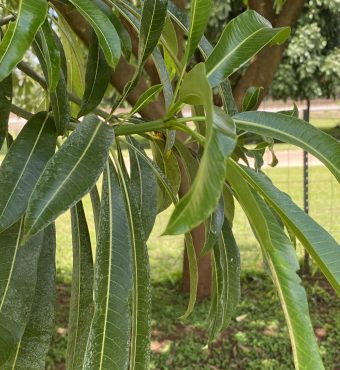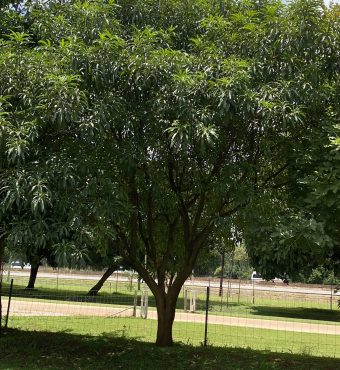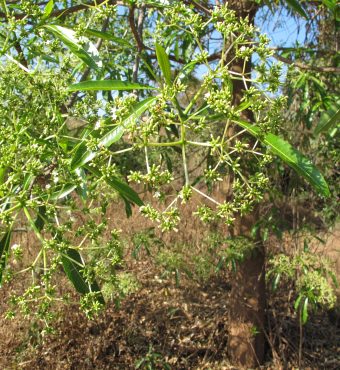


Botanical Name: Rauvolfia caffra
Common Name: Quinine Tree, Mwimbi, Mubimbi, Mutoto, Mutochi, Mvumbamvula
Plant Family: Apocynaceae (Mango Family) Rauvolfioideae
Growth Form, Habitat and Distribution: A tall and dense, evergreen tree, with a rounded crown and drooping branches in whorls of four. Occurs widely, mainly in riverine, or wet woodland and forest across the country except in the dry south-western parts of Western and Southern Provinces. Similar to another riverine species, Breonardia, that is confined to eastern Zambia.
Size: Height up to 24m, spread 5 to 15m.
Bark: Dark yellow-brown, or dark grey, rough with fine even fissuring. Exudes copious amounts of poisonous, thin, white latex when damaged.
Leaves: Mango-like, opposite in whorls of 3 to 5 at branch-ends, leathery 12 to 18cm, darkish green narrowly lanceolate with a distinctively pale midrib.
Flowers: Usually monoecious. Flowers small (4mm), creamy, or white and fragrant in showy terminal sprays, July to October.
Fruit: Round, grape-sized (2cm), in clusters, green becoming purple, ripening November to February poisonous with 1 or 2 grooved seeds.
Uses: Secretions from infestation with frog-hoppers give a “rain tree” effect. The tree is known to contain numerous alkaloids but so far without commercial uses. Produces a good firewood and makes a good shade tree, growing fast from seed or truncheons.
